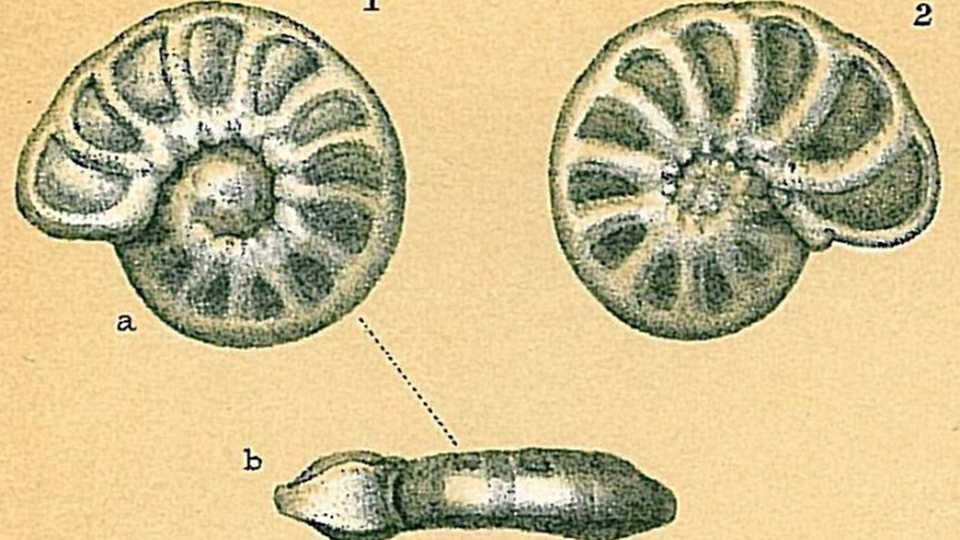Science News
Small Ocean Monitors
November 4, 2013
by Molly Michelson

Small-shelled organisms might be our best monitors of ocean temperatures, past and present.
Researchers, publishing in the journal Science last week, looked at Hyalinea balthica, ancient one-celled organisms buried in sediments where the Pacific Ocean flows into the Indian Ocean off of Indonesia. H. balthica are extinct species of Foraminfera (a.k.a. “forams,” for short).
Many forams live on the sea-floor and get buried in the sediments as they die. By drilling into the sediment, scientists can explore the past within Foraminfera fossils.
According to New Scientist:
By measuring the levels of magnesium to calcium in the shells of H. balthica, the researchers estimated the past 10,000 years of temperature changes in the middle-depth waters where the forams lived, from about 1,500 to 3,000 feet down.
The researchers determined that the water temperatures cooled from about 7,000 years ago until about 1600. Around that time, temperatures started gradually going back up. Then, over the last 60 years, water column temperatures increased 0.18°C, or 0.32°F. That might seem small in the scheme of things, but it’s a rate of warming 15 times faster than at any period in the last 10,000 years!
The findings suggest that the oceans may be storing even more of the effects of carbon emissions than scientists realized. “We’re experimenting by putting all this heat in the ocean without quite knowing how it's going to come back out and affect climate,” says study co-author Braddock Linsley, of Columbia University’s Lamont-Doherty Earth Observatory. “It’s not so much the magnitude of the change, but the rate of change.”
“We may have underestimated the efficiency of the oceans as a storehouse for heat and energy,” says lead author Yair Rosenthal of Rutgers University. “It may buy us some time—how much time, I don’t really know. But it’s not going to stop climate change.”
This research could have the potential to inform scientists and policy makers on how to address climate-related environmental issues more effectively.
What will future foram fossils tell scientists?
Image: Brady, H.B. (1884) Pl. 112/WoRMS
Researchers, publishing in the journal Science last week, looked at Hyalinea balthica, ancient one-celled organisms buried in sediments where the Pacific Ocean flows into the Indian Ocean off of Indonesia. H. balthica are extinct species of Foraminfera (a.k.a. “forams,” for short).
Many forams live on the sea-floor and get buried in the sediments as they die. By drilling into the sediment, scientists can explore the past within Foraminfera fossils.
According to New Scientist:
Each foram builds a hard shell around itself, and the amount of magnesium in the shell varies depending on the temperature of the surrounding water. By measuring the amount of the mineral in the shells, it is possible to work out the temperature of the water in which the forams lived.
By measuring the levels of magnesium to calcium in the shells of H. balthica, the researchers estimated the past 10,000 years of temperature changes in the middle-depth waters where the forams lived, from about 1,500 to 3,000 feet down.
The researchers determined that the water temperatures cooled from about 7,000 years ago until about 1600. Around that time, temperatures started gradually going back up. Then, over the last 60 years, water column temperatures increased 0.18°C, or 0.32°F. That might seem small in the scheme of things, but it’s a rate of warming 15 times faster than at any period in the last 10,000 years!
The findings suggest that the oceans may be storing even more of the effects of carbon emissions than scientists realized. “We’re experimenting by putting all this heat in the ocean without quite knowing how it's going to come back out and affect climate,” says study co-author Braddock Linsley, of Columbia University’s Lamont-Doherty Earth Observatory. “It’s not so much the magnitude of the change, but the rate of change.”
“We may have underestimated the efficiency of the oceans as a storehouse for heat and energy,” says lead author Yair Rosenthal of Rutgers University. “It may buy us some time—how much time, I don’t really know. But it’s not going to stop climate change.”
This research could have the potential to inform scientists and policy makers on how to address climate-related environmental issues more effectively.
What will future foram fossils tell scientists?
Image: Brady, H.B. (1884) Pl. 112/WoRMS